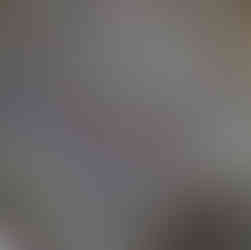Day 19 - Istanbul, Turkey
- Maggie Thompson
- Jul 15, 2024
- 3 min read
Updated: Jul 21, 2024
Today we’re in Istanbul. Neither of us have ever been to Turkey. We did a panoramic tour of the city. Istanbul is in both Europe and Asia. There are three bridges and a tunnel that connect Asia and Europe in Istanbul. Istanbul was a capital city in the Roman and Ottoman empires and used to be Constantinople. Constantine the I made Christianity the main religion of Rome, and created Constantinople, which became the most powerful city in the world. Emperor Constantine (ca A.D. 280– 337) reigned over a major transition in the Roman Empire.
Turkey, and Istanbul in particular, has always been a melting pot of culture and religion. As the bridge between Europe and Asia, it has been the battleground for physical and ideological warfare over the centuries.
Çamlıca Tower in Istanbul, Turkey is the tallest structure in the city and may also be the tallest tower in Europe.
The Palace of Boukoleon was one of the Byzantine palaces in Constantinople (present-day Istanbul). The palace is located on the shore of the Sea of Marmara, to the south of the Hippodrome and east of the Little Hagia Sophia.
Bosphorus Strait is a natural strait and an internationally significant waterway located in Istanbul, Turkey. The Bosporus connects the Black Sea to the Sea of Marmara and forms one of the continental boundaries between Asia and Europe. It also divides Turkey by separating Asia minor from Thrace (European Turkey). It is the world's narrowest strait used for international navigation.
Wiki: The Blue Mosque in Istanbul, also known by its official name, the Sultan Ahmed Mosque, is an Ottoman-era historical imperial mosque located in Istanbul, Turkey. It was constructed between 1609 and 1617 during the rule of Ahmed I and remains a functioning mosque today.
We went in the Blue Mosque and Martha and I were given scarves (head cover) and I also got a skirt (leg cover). Dave’s shorts didn’t quite cover his knees so the guard told him to unzip and lower them so his knees were covered. We are not making this up. We had to take off our shoes - strict no shoes in mosque policy!
So imagine what the mosque smelled like with probably 500 or more people inside on a 95 degree day with no shoes or air conditioning. Our tour guide was an in depth explainer and after 10 minutes, we couldn’t take it. So Martha, Dave, and I bailed, returned the scarves and skirt, put our shoes back on, and sat outside to wait for the group to catch up.
German fountain - made to honor the German king in 1908
Obelisk of Theodosius: In the centre of the Hippodrome, this immaculately preserved pink granite obelisk was carved in Egypt during the reign of Thutmose III (r 1549–1503 BC) and erected in the Amon-Re temple at Karnak. Theodosius the Great (r 379–95) had it brought from Egypt to Constantinople in AD 390.
Serpentine column is another of the monuments in the Hippodrome, brought to Istanbul in the 4th century. This column was made from melted booty taken when the Greek army defeated the Persians. It had a golden cauldron at its top. This cauldron was attached by coils, each in the shape of a serpent.
Wiki: Hagia Sophia is a sixth-century Byzantine edifice (a mosque since July 2020) that is considered to be one of the architectural wonders of the world. The central 160-foot-tall dome, built between 532 and 537 and restored several times over the centuries, is one of its most impressive features, along with the precious and spectacular mosaics that adorn its inside and the marble used throughout. When the church was captured, it was converted to a mosque in three days. But they didn’t destroy any statues, they just removed them from eye level so they would not interfere with men’s prayers.
Martha found another furry friend.




































Comments